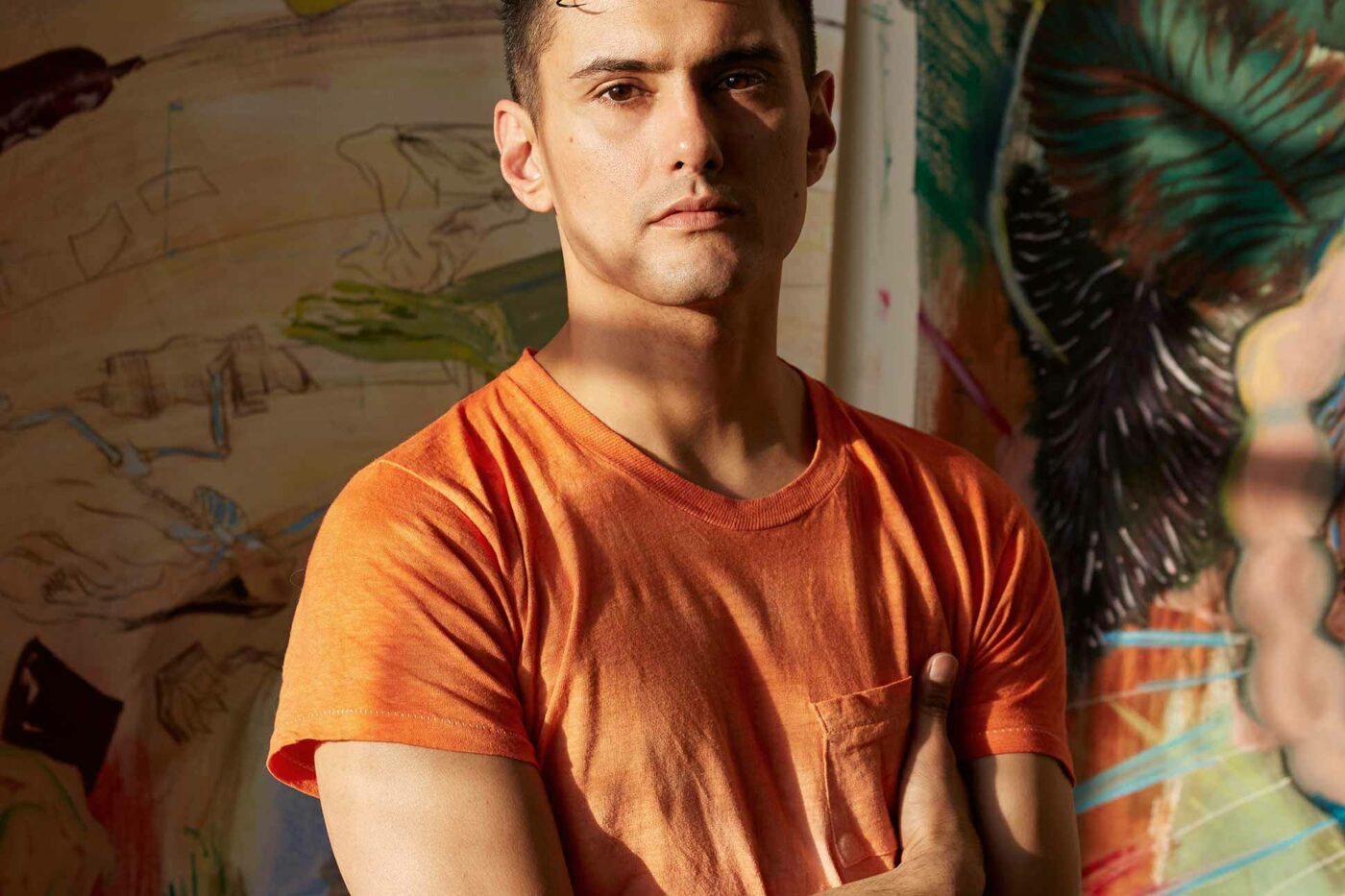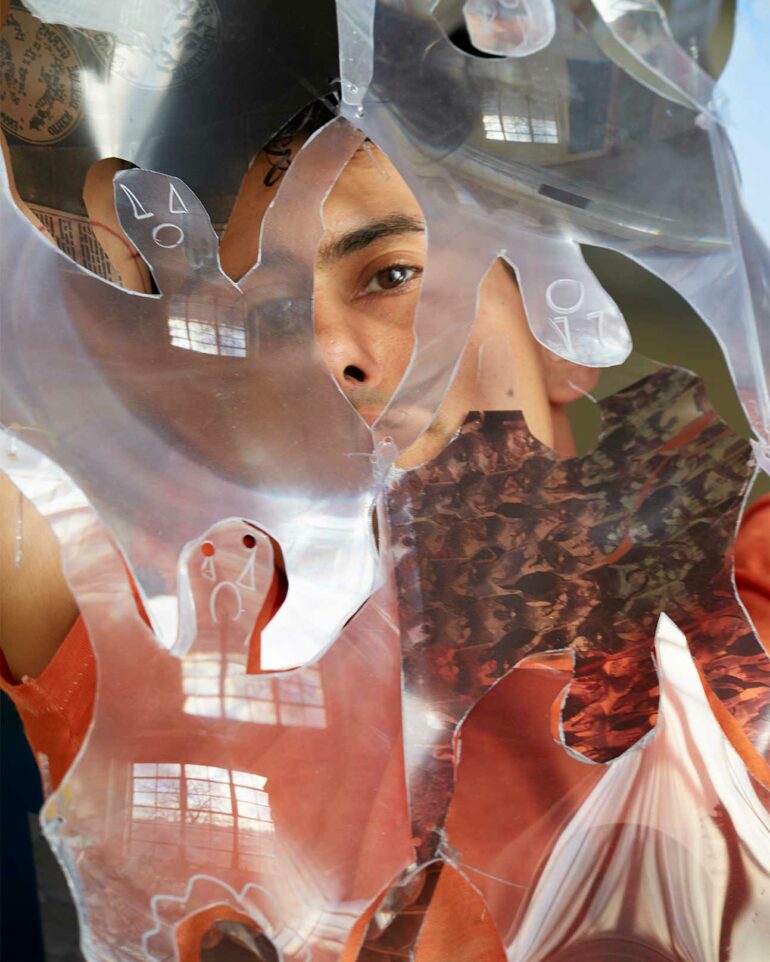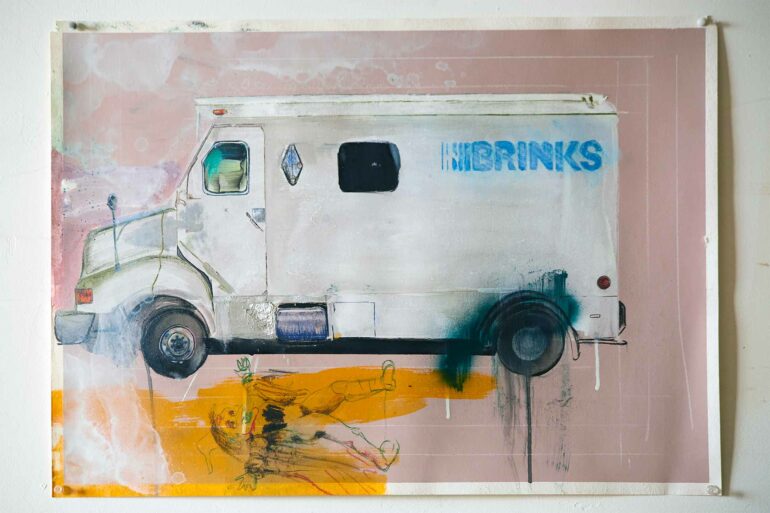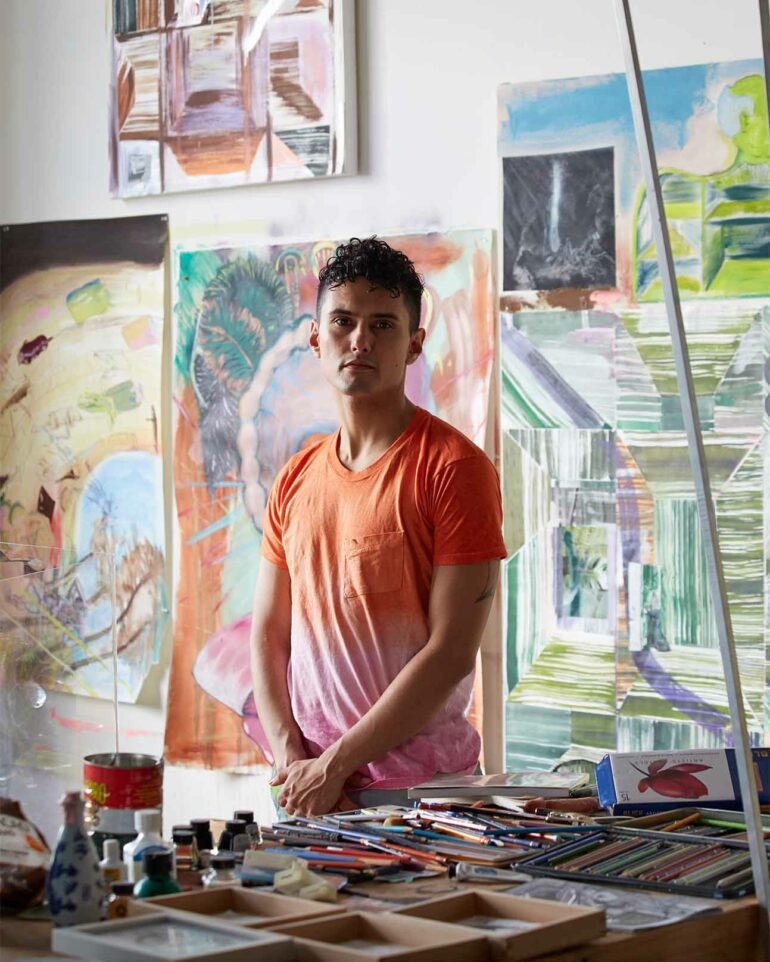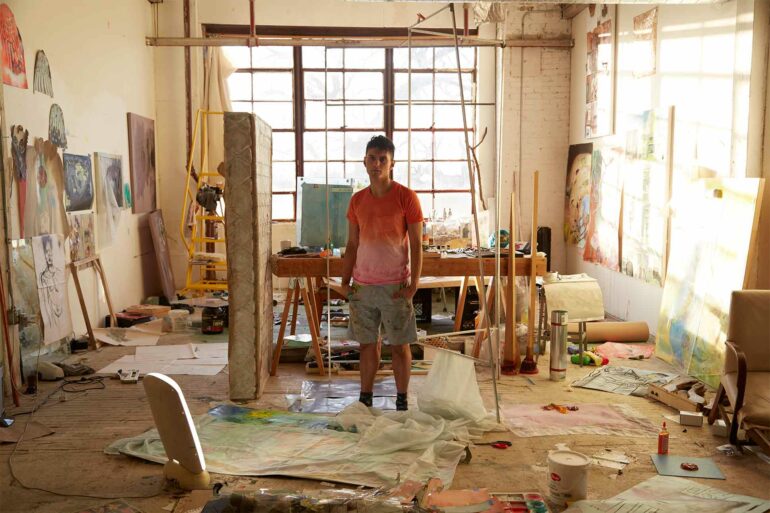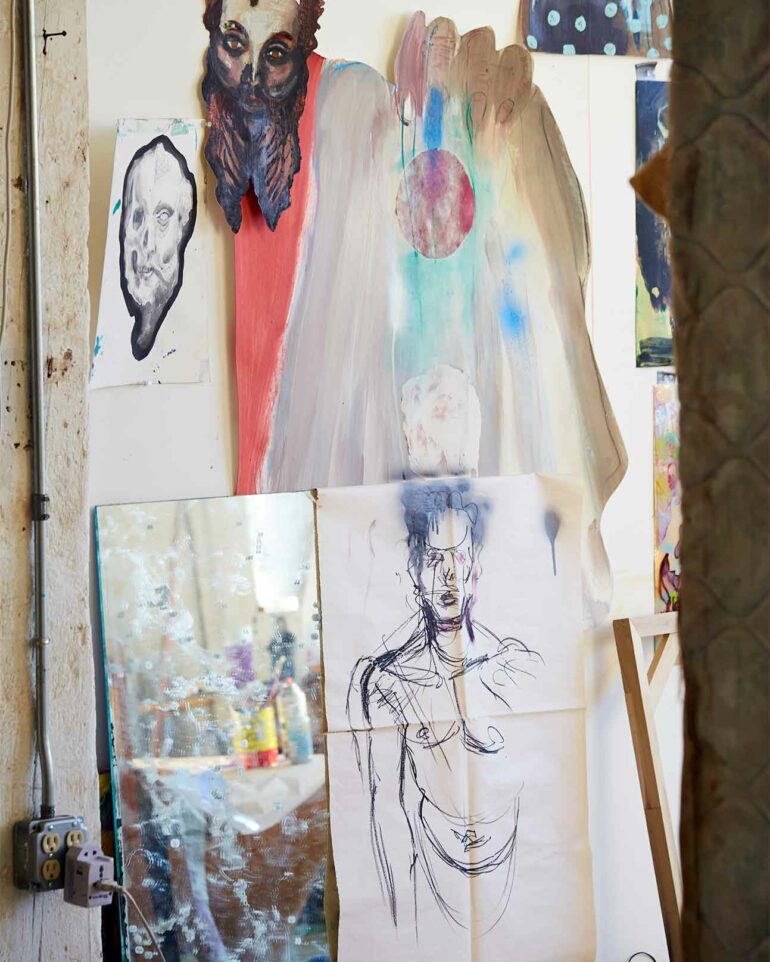The evidence of this willingness to experiment is everywhere in Hanley’s studio. His work spans different media and approaches and the abundance of cheap studio space that Chicago offers is clearly important to him. Moving here, and having a large space to work in – unfettered by financial pressures – along with the city’s healthy art ‘eco-system’, have meant that he has grown and developed as an artist, possibly in ways that he may never have done in somewhere like New York City.
As much as Stevie allows himself the freedom to experiment, he can also filter out the work that needs to be taken to another level.
“An artist can have different states of mind; there’s creative time, and there’s a time to be more critical, to say, ‘ok that didn’t work!’”
In the time that he has been in Chicago, Stevie has had some successful shows in high profile spaces in the city, including the International Museum of Surgical Science and Google’s headquarters. He also maintains strong, avant-garde credentials, by showing at galleries like the Julius Caesar, who have a reputation for featuring the cream of Chicago’s emerging artists. It’s places like this that make Chicago an exciting prospect for artists and collectors looking to invest in fresh talent before they are picked up on the bigger stage. If you know where to look, you can find some fantastic work for relatively little money. In return, you get to have that warm fuzzy feeling that comes with knowing that you are helping to support someone’s career.
One of the things that excites me most about the younger generation is their ability to create their opportunities and in turn, build communities. Stevie is a shining example of how to do both. In addition to making and showing his work, Hanley is invested in facilitating the work of other young queer artists. In 2017, he set up a collectively run arts space, The Condo Association in Humboldt Park.
“When I was a young art student in California, one of my tutors, Verónica de Jesus, said to me that it is vital for artists to figure out a way to show their work. They shouldn’t wait around for galleries to take an interest, they should show in bathrooms, or their living rooms – I’m a real proponent of that idea. I think that it is really important for people to see the work; and to make that happen sometimes, you have to that in your front room.”
As someone who strongly believes in LGBTQ culture, it is encouraging to see that there is something like The Condo Association that is dedicated to pushing queer interests in Chicago.
“We’re unapologetically focused on queer art, and show a lot of sex-positive work,” Stevie explains with typical enthusiasm. “We want to take on fiercely queer projects that you won’t find in another gallery in Chicago, or America for that matter. Part of our ethos is to create a queer space in form as well as function, so it’s nothing like a pretty, commercial gallery. I’ve just curated a big show on bottoming, called ‘God Bottom’. Before that, we hosted an evening of guided masturbation and meditation.”
Despite the unconventional approach, they’ve worked their way into the city’s cultural life and pricked the consciousness of the mainstream media.
“Our first official show got written about in the Chicago Tribune. They announced us as the only explicitly queer gallery in the city, and a lot of people were excited for that. I guess our success is because Chicago’s LGBTQ community is so big. It’s the gay metropolis of the whole mid-west area. It’s also surprisingly sex-positive, which I had no idea about before I came. It’s the home of International Man of Leather (IML) and there are a lot of bars in Chicago that have darkrooms and cruising areas. Back in California, it was illegal. So I’d never heard of that until I moved to Berlin.”
Another surprise to many people, Hanley continues, is the city’s gay beaches. “On the South Side, which is predominantly African-American, there is Rainbow beach, where they hold Black Gay Pride. And in the north in Edgewater, there is Kathy Osterman Beach (or Hollywood Beach). I was living here for about two years before I discovered it for myself, but now I try to spend as much time there in the summer as I can. There are waves, just like the ocean and it’s beautiful and pleasant. Chicago can get very hot and humid so having the beach is wonderful; you can drink and get food and there are hundreds of gay men and queers just hanging out.”
It seems to me that Stevie is doing everything right. He has managed to carve out a life for himself that nurtures his art and yet remain financially independent. He does this while facilitating both the talents of others and helping to create a progressive, enlightened community. His story is typical of the people I have met here. It seems to be somewhere that not only champions artistic endeavour but has a notable lack of pretence and values community.
Throughout history, artists have needed a number of things to create interesting work. They need space and time to develop, an artistic community within which they can construct a critical dialogue and the means to share and sell their work. Hanley has found this in Chicago and what he didn’t find, he has helped to create. In my book, that makes him someone worth watching, not just as a highly investable artist, but as a linchpin for a wider artistic community. Any serious collector will have already added Chicago to their watch-list, but for those looking to start, my tip is to invest in the city’s blossoming talent.
Photography by Martin Perry


